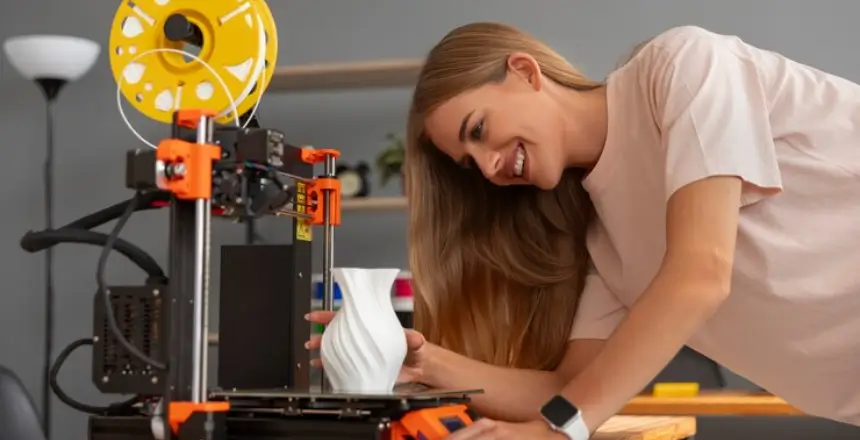Welcome to the world of 3D technology, where innovation and creativity come together to bring us a whole new level of visual experience. From movies and video games to scientific research and medical advancements, 3D technology has significantly impacted various industries and changed the way we perceive reality.
By adding depth, texture, and dimensionality to images, it has opened up endless possibilities for visualization and exploration.
Put on your virtual reality goggles or grab some popcorn as we take you on a journey through the incredible capabilities of 3D technology. Get ready to be amazed!
Architectural Visualization and Interior Design
Architects and interior designers have always strived to create designs that exceed their clients’ expectations. Communicating their vision had always been a challenge until the invention of 3D technology.
This technological advancement has brought about a paradigm shift in the field of architecture and interior design, by creating an immersive experience for clients, thanks to its realistic visualization. Aside from simplifying the communication process, it allows for amendments to be made without upheavaling the entire design.
Take holographic fans as an example. With 3D models projected onto a spinning fan, clients can view the design from all angles and the holographic effects make it almost like stepping into a virtual room. Or how about using augmented reality to place furniture and decor in a room before purchasing it?
3D technology has revolutionized the way architects and designers work, making it possible to create stunning visualizations that were previously impossible. It’s truly a game-changer.
Medical Imaging and Research
The medical field has benefited immensely from 3D technology, especially in the areas of imaging and research. With the help of 3D printing, doctors can now create accurate replicas of organs for better analysis and understanding.
Consequently, this has led to more precise and successful surgeries. Moreover, 3D technology has enabled medical professionals to visualize intricate details of the human body that were previously impossible to see with traditional imaging methods.
This technology is also being used in research for drug development and disease treatment. By creating 3D models of cells and molecules, scientists can better understand their structures and functions. In the medical field, the possibilities of 3D technology are endless and have the potential to save countless lives.
Gaming and Entertainment
With the use of this technology, game developers and animators can create engaging environments and characters that offer a more immersive experience to players and viewers alike. The ability to see 3D objects on a 2D screen has allowed for new opportunities in these fields, with a variety of 3D games, movies, and TV shows being produced to take advantage of this technology.
It’s no wonder the industry has seen a surge in the number of people who find themselves captivated by these 3D experiences. The demand for more innovative ways of using 3D technology has created a competitive and dynamic environment that is constantly pushing the boundaries of what is possible.
Product Design and Prototyping
In terms of product design, using 3D technology allows designers to create accurate and detailed virtual models of products before they are even produced. This has significantly reduced the time and cost involved in the prototyping stage, making it possible for companies to bring their products to market faster.
3D printing has also made it easier for designers to create intricate prototypes with complex designs that were previously impossible to produce. Imagine designing a new car and being able to print out a life-size 3D prototype to test it out before even building the actual vehicle. That’s the power of 3D technology in product design.
Education
Educational institutions are increasingly recognizing the potential of this technology to create immersive learning environments that cater to a wide range of subjects. Beyond the traditional classroom setup, 3D technology has made it possible for students to simulate complex molecular structures in science class or to reenact historical events in a virtual reality environment.
This approach fosters creativity and deeper understanding, not to mention the fact that it provides a more realistic and fun experience for learners. As technology continues to advance, it is exciting to see how 3D visuals will continue to enhance the learning experience for students of all ages.
Virtual Tourism
Last but certainly not least, we have virtual tourism: a revolutionary way to explore new places and cultures without leaving your home. With the help of 3D technology, you can virtually visit any place in the world and get an immersive experience that feels almost like being there in person.
Whether it’s exploring the ancient ruins of Machu Picchu or taking a virtual tour of the Louvre Museum, 3D technology has made travel accessible to everyone.
But beyond just being a fun way to explore new destinations, virtual tourism also has potential benefits for sustainable travel. By reducing the need for physical travel, it can decrease our carbon footprint and preserve the environment.
The power and potential of 3D technology are truly awe-inspiring. We’ve peeked into its fascinating applications across various industries, from architectural visualization and medical research to gaming, product design, education, and even virtual tourism.
Each application of 3D technology not only revolutionizes its respective fields but also enhances our overall quality of life, making things more convenient, efficient, and exciting.
As we continue to explore and push the boundaries of this technology, one can only imagine what other revolutionary advancements lie ahead. So, let’s embrace this wonderful journey of innovation and allow 3D technology to continue transforming our reality into a realm of endless possibilities.








